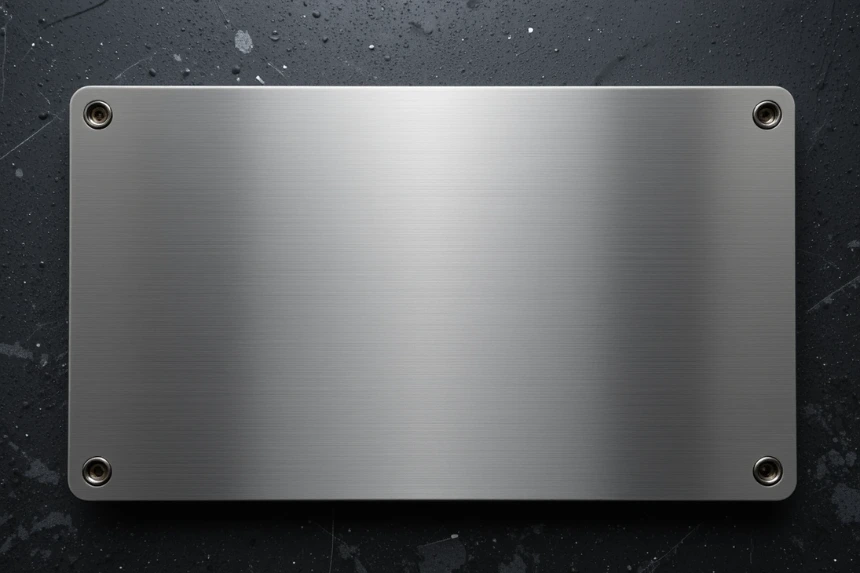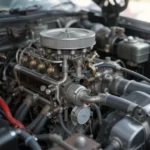Because of its strength, ability to withstand corrosion, and visual attractiveness, stainless steel is a material that is widely used in many different industries. Among the different types of stainless steel, 304 stainless steel is one of the most widely used grades. However, many people are curious about its magnetic properties, leading to the question: “Is 304 stainless steel magnetic?” In this article, we will explore the magnetic characteristics of 304 stainless steel, discuss the science behind its magnetic behavior, and clarify common misconceptions.
What Is 304 Stainless Steel?
304 stainless steel is an austenitic stainless steel, classified under the 300 series of stainless alloys. It contains approximately 18-20% chromium and 8-10% nickel, contributing to its excellent corrosion resistance, formability, and weldability. Because of its versatility, 304 stainless steel is used in kitchen appliances, medical instruments, architecture, food processing equipment, and more.
One of the primary properties of 304 stainless steel is its austenitic structure, which in its optimum condition is non-magnetic. However, its magnetic properties can vary depending on how it’s processed or manipulated.
Is 304 Stainless Steel Magnetic?
When 304 stainless steel is pure and annealed (basic, untreated), it is typically non-magnetic. This is because the austenitic crystal structure does not exhibit magnetic behavior; the atoms are arranged in a way that cancels out magnetic effects.
When Does 304 Stainless Steel Become Magnetic?
Despite its typical non-magnetic nature, 304 stainless steel can become magnetic under certain conditions. These include:
Work Hardening: During machining, welding, or severe deformation, the crystal structure of the steel can be altered from austenitic to martensitic or ferritic phases, which are magnetic. This process, called work hardening, can induce magnetism in 304 stainless steel.
Cold Working: Cold forming or rolling the material can increase its magnetic properties. The more it’s mechanically worked, the more likely it is to develop some magnetic characteristics.
Heat Treatment: Certain heat treatments, especially involving rapid cooling or specific thermal processes, can also influence magnetic responses.
Magnetic Response of 304 Stainless Steel in Practical Use
In daily practical applications, many 304 stainless steel objects exhibit weak or no magnetic attraction. For example, kitchen appliances or utensils made from 304 stainless steel generally do not stick to magnets. However, if the steel has undergone significant mechanical deformation or is welded, it might display magnetic behavior.
How to Test If Your 304 Stainless Steel is Magnetic
It is simple to test 304 stainless steel’s magnetic qualities:
Use a Magnet: Just place a magnet near the steel object. The steel has became magnetic, most likely as a result of work hardening or modification, if the magnet pulls it firmly. The steel stays non-magnetic if there is little to no attraction.
Visual Inspection and Feel: While not a definitive method, a piece that feels stiff or has visible deformation might be more likely to be magnetic after processing.
Remember, the presence or absence of magnetism is not necessarily an indicator of quality or purity. Many stainless steels are made non-magnetic on purpose and still are highly durable and corrosion-resistant.
Why Does the Magnetism of 304 Stainless Steel Matter?
Understanding whether “is 304 stainless steel magnetic” influences choices in many sectors:
Kitchenware and Appliances: Non-magnetic stainless steel is preferred for food safety and ease of cleaning.
Medical Instruments: Non-magnetic material prevents interference with electronic medical equipment.
Industrial Applications: Magnetic properties may affect how steel interacts with electronic components or magnetic fields in machinery.
Recycling: Knowing the magnetic behavior helps identify the steel type during recycling processes.
Comparing 304 Stainless Steel to Other Grades
To give a clearer picture, here’s a comparison:
| Stainless Steel Grade | Magnetic? | Notes |
| 304 | Typically no, but may become slightly magnetic after deformation | Austenitic, non-magnetic in pristine form |
| 316 | Usually non-magnetic | Similar to 304 but with molybdenum for better corrosion resistance |
| 430 | Magnetic | Ferritic stainless steel, naturally magnetic |
| 410 | Magnetic | Martensitic stainless steel, heat-treatable |
This comparison underscores the importance of understanding the processing and type of stainless steel to predict its magnetic behavior.
Conclusion: The Truth About “Is 304 Stainless Steel Magnetic?”
In summary, “is 304 stainless steel magnetic?” In its initial, annealed state, the answer is typically no. It is classified as an austenitic stainless steel, which naturally exhibits non-magnetic properties due to its crystal structure. However, when subjected to mechanical deformation, welding, or cold working, 304 stainless steel can become slightly magnetic.
This variability explains why some objects made from 304 stainless steel might stick to magnets, while others do not. The key takeaway is that the magnetic behavior of 304 stainless steel depends largely on its processing history rather than purely on its composition.
If you need to determine whether a piece of stainless steel is magnetic, a simple magnet test is usually sufficient. Remember, the presence of magnetism does not necessarily indicate inferior quality it simply reflects changes in the material’s crystalline structure due to manufacturing processes.



